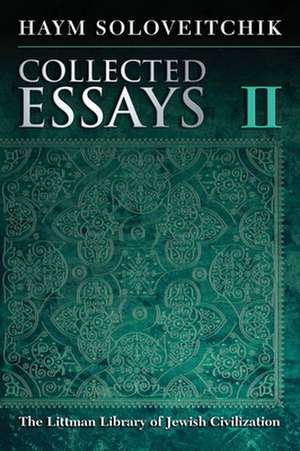Collected Essays – Volume II
Autor Haym Soloveitchiken Limba Engleză Hardback – 6 noi 2014
Preț: 522.81 lei
Nou
Puncte Express: 784
Preț estimativ în valută:
100.05€ • 104.07$ • 82.60£
100.05€ • 104.07$ • 82.60£
Carte disponibilă
Livrare economică 24 martie-07 aprilie
Preluare comenzi: 021 569.72.76
Specificații
ISBN-13: 9781904113980
ISBN-10: 1904113982
Pagini: 442
Dimensiuni: 155 x 235 x 43 mm
Greutate: 0.82 kg
Ediția:New.
Editura: LUP – Littman Library
ISBN-10: 1904113982
Pagini: 442
Dimensiuni: 155 x 235 x 43 mm
Greutate: 0.82 kg
Ediția:New.
Editura: LUP – Littman Library












